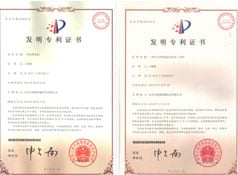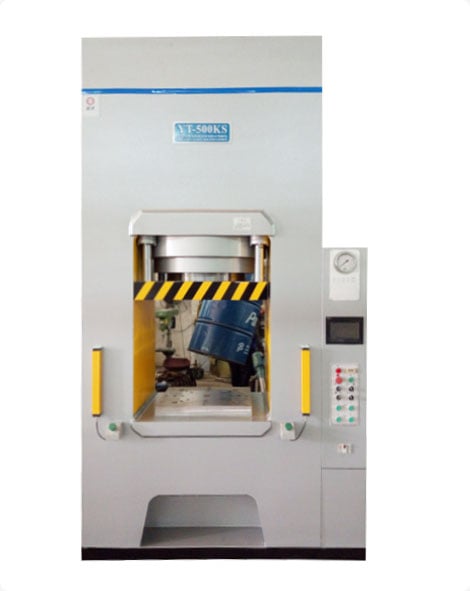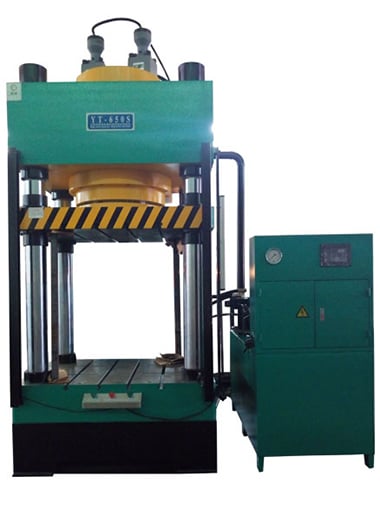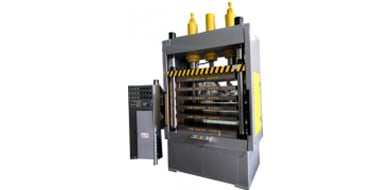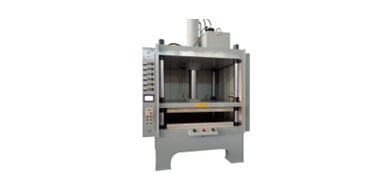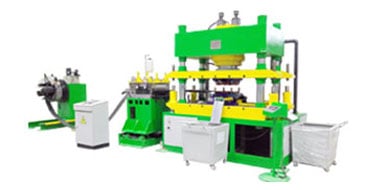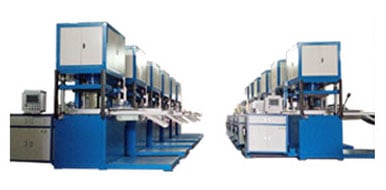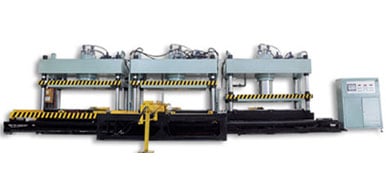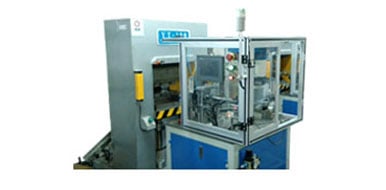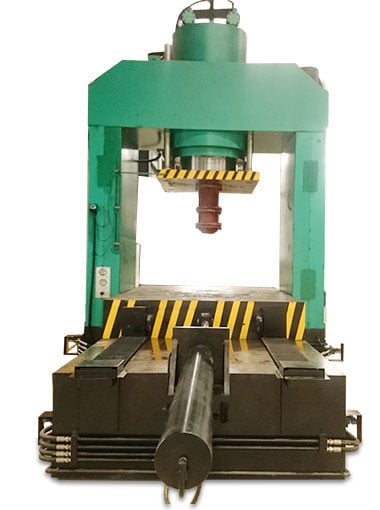Can Coal Be Made Into Diamonds With a Hydraulic Press?
time:2023-05-30 views:(点击 1,560 次)
Hydraulic Press Channel on YouTube is well known for their series of videos in which various objects are subject to pressure from hydraulic presses. But now they have taken things one step further by placing a diamond beneath their press.
Natural diamonds form over billions of years under intense pressure and temperature conditions, but can coal be made into diamonds using a hydraulic press?
What is a Hydraulic Press?
Hydraulic presses are machines that use fluid pressure to generate mechanical force, consisting of a hydraulic pump, an accumulator and cylinders. Cylinders extend or retract depending on the work being completed while an accumulator stores high-pressure fluid and the hydraulic pump then pumps this to create force in its work process.
Typically, laboratory hydraulic presses prepare samples for spectroscopic analysis by compressing them into pellets or thin films. Potassium bromide (KBr) may also be mixed with ground samples to form pellets suitable for FTIR analysis.
Hydraulic presses come in all sorts of shapes and sizes, each featuring their own frame construction, bolster thickness, dimensional capacity, hydraulic tonnage capacity and workload requirements. Selecting one to meet these specifications for your business's workload needs is of utmost importance - its frame size, ram force, stroke length speed and duration of pressure dwell can be tailored specifically to meet these specifications.
How Does a Hydraulic Press Work?
Although there are various kinds of hydraulic presses, all operate similarly. First comes the hydraulic pump; this may be manual, pneumatic or electric depending on your application and press size. Next comes creating pressure that's usually measured in tons; finally this pressure is transferred through hydraulic cylinders onto material being pressed to apply pressure directly onto it.
Pascal's Law dictates that any mechanical force exerted in any part of an incompressible fluid is transmitted uniformly throughout its entirety; in hydraulics terms this means any force applied to a piston will be passed onto all surrounding material being compressed equally.
Hydraulic presses are operated via a hydraulic power unit and hydraulic directional control valves, which enable fine tuning of forces and speed of operation. Thanks to fewer moving parts, hydraulic presses are relatively inexpensive and straightforward to maintain; additionally they offer full tonnage throughout their stroke and can reach pressures exceeding what mechanical presses can.
What Are the Benefits of Using a Hydraulic Press?
Hydraulic presses offer many advantages that are unavailable from mechanical presses, including being easy to operate and long lasting when used correctly and maintained regularly; not to mention being considerably less costly than similar mechanical presses of equal tonnage.
Hydraulic presses deliver their full power throughout their stroke, unlike mechanical presses which must adjust their tonnage at the end. This makes hydraulic presses an invaluable asset when drawing operations require that full force be delivered on die.
Coal is made up of carbon, and under certain circumstances can be transformed into diamonds through temperature and pressure changes. While this might sound like something out of a Hollywood blockbuster, this process takes place beneath our planet's surface; unfortunately it's too slow and expensive to provide industry with sufficient diamond production volumes.
What are the Different Types of Hydraulic Presses?
Chris Reeve's Man of Steel famously used a hydraulic press in 1983's Superman III to transform a lump of coal into a stunning diamond, although this scene may seem farfetched; nevertheless, the concept behind it remains sound.
Hydraulic presses are relatively straightforward machines with few moving parts that lubricated with pressurized oil for consistent operation without breaking down, plus their components tend to be cheaper to repair than other forms of industrial machinery.
Hydraulic presses come in various styles and capacities, each offering their own set of forces and capabilities. An H frame hydraulic press has an H-shaped structure featuring the pump, press cylinder and bolster. In comparison, single column hydraulic presses often use C frames instead - these tend to be found in repair shops and maintenance buildings with limited floor space requiring repair or assembly operations. Hydraulic presses can easily be altered and reconfigured for any production or assembly process by changing die sizes, pressure settings, stroke speed or workpiece placement.
Link to this article: https://www.ihydraulicpress.com/mk/3270.html
Hot Articles
-
How to Make a Hydraulic Press Machine
Hydraulic presses are powerful machines that use liquid as the force transmitter, capable of performing various metal sheet forming processes such……
-
How to Build a Hydraulic Press Machine
Hydraulic presses are powerful tools for crushing and shaping metal. Their straightforward design makes maintenance simple. Furthermore, you can c……
-
How to Operate Hydraulic Press Brake
Hydraulic press brakes use an array of hydraulic cylinders that work in unison to achieve high bending capacity, with impressive precision for ben……
-
How to Repair Hydraulic Hose Dripping From a Pressed Fitting
By performing regular inspections and following an effective preventive maintenance program, carefully selecting hose and fittings and keeping every……
-
How Much Pressure Does a Hydraulic Press Have?
A hydraulic press can exert thousands of pounds of force to form metal parts. This makes it ideal for industrial operations that require large amoun……
-
Hydraulic Press For Ceramics
Hydraulic presses are machines that utilize fluid-filled cylinders to generate compressive force, which is then used to shape and mold objects into ……
-
How to Build a Hydraulic Shop Press
A hydraulic shop press is an invaluable tool that has many uses. It can push bearings onto shafts, stamp metal and bend metal. Shop presses can be p……
-
How to Build a 12 Hydraulic Press Break
Hydraulic presses use a pump and ram to generate force. They work according to Pascal’s principle – where modest mechanical force appl……
Latest News
-
How a Hydraulic Press Can Multiply Force and Energy
Hydraulic presses, commonly referred to as Bramah presses after their inventor Joseph Bramah, are machines that utilize cylinders to apply compressi……
-
Hydraulic Press For Concrete Repair
A hydraulic press is a mechanical tool used to shape and deform metals. It works on Pascal’s law, which states that pressure within an enclose……
-
Hydraulic Press for Food Processing
If you need a reliable way to apply pressure on an object, hydraulic presses are an ideal choice. They’re straightforward, affordable, and eas……
-
Types of Rubber Molding Machines
The rubber molding industry is a large and rapidly expanding sector of the manufacturing industry. There are various machines available for producin……
-
Hydraulic Press For Paper Recycling
Paper recycling is an effective way to conserve trees, while providing employment in the recycling industry. Hydraulic press manufacturers create a ……
-
Hydraulic Press for Hydraulic Fitting Repair
Hydraulic presses are widely used in a range of industries and applications. They’re typically employed to press two materials together or str……
-
Hydraulic Press for Medical Devices
Hydraulic presses are indispensable tools in the medical industry, yet they also carry risks that could result in accidents and injuries if misused.……
-
Is There Anything a Hydraulic Press Can’t Crush?
Hydraulic presses make quick work of flattening and crushing objects, helping a workshop make money by crushing old oil filters for recycling purp……


